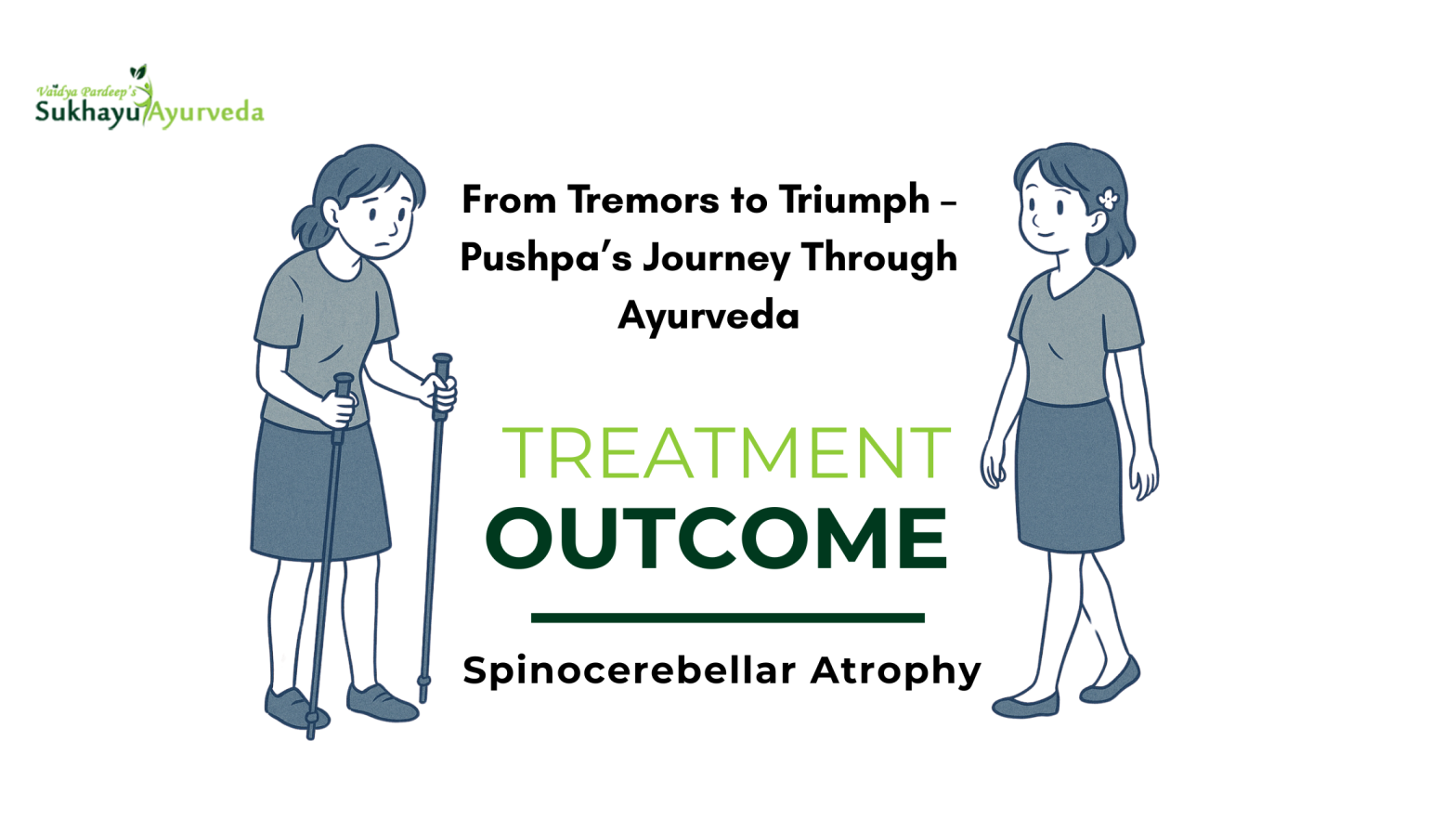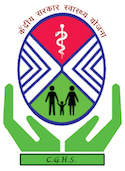From Tremors to Triumph – Pushpa’s Journey Through Ayurveda for Spinocerebellar Ataxia

When the body begins to stumble and the voice starts to tremble, most would believe the future holds only decline. But at Sukhayu Ayurved, we believe in possibilities—guided by Ayurveda, anchored in evidence, and woven with hope.
This is the story of Pushpa Sharma, a 24-year-old woman diagnosed with Spinocerebellar Ataxia (SCA). Her journey from a place of fear and functional loss to one of control and confidence is not just a testimony—it is a proof of Ayurveda’s precision and power in managing neurodegenerative diseases.
Understanding Spinocerebellar Ataxia: A Degeneration of Balance
Spinocerebellar Ataxia is a progressive neurodegenerative disorder that primarily affects the cerebellum and spinal cord, leading to:
- Imbalance while walking
- Slurred speech (dysarthria)
- Poor coordination of limbs
- Involuntary eye movements (nystagmus)
In Pushpa’s case, the symptoms began subtly—she occasionally tripped, her handwriting changed, and conversations became harder to follow. Within months, her coordination had deteriorated to the extent that she needed assistance to walk and struggled to speak fluently.
Modern neurology offered her a diagnosis, but no clear roadmap for reversal. That’s when she reached Sukhayu Ayurved.
The Ayurvedic Perspective: A Vata Vyadhi Involving Majja Dhatu
According to Ayurveda, Spinocerebellar Ataxia closely resembles Urdhvajatrugata Vata Vyadhi, with predominance of Prana, Vyana, and Udana Vata. The degeneration of fine motor control, loss of coordination, and decline in cognition are signs of Majja Dhatu Kshaya (depletion of nervous tissue), further complicated by Srotorodha (blockage of neural channels).
Our approach to Pushpa’s treatment was not to suppress symptoms—but to restore the functional harmony of Vata, nourish Majja Dhatu, and reestablish neurocommunication pathways.
The Panchakarma Protocol: A 21-Day Structured Healing Journey
Pushpa was admitted under our 21-day IPD Panchakarma Program, designed specifically for neurodegenerative disorders. Here is a breakdown of how each therapy addressed the root pathology:
Nasya – Medicated Oil Nasal Therapy
Administered daily in the first week, Nasya helped clear the head channels and stimulate higher centers of the brain.
It targeted Prana Vata and improved cognitive clarity, speech, and oculomotor balance. Pushpa herself noticed that by Day 4, her speech began to sound more coherent and less strained.
Shirodhara – Medicated Oil Drip Therap
Performed during Week 1 and 2, Shirodhara used specific medhya dravyas to pacify anxiety, improve sleep, and stabilize Udana Vata.
Pushpa had not experienced a full night of restful sleep for over a year. After the third session of Shirodhara, she reported sleeping for more than six hours without interruption.
Pinda Sweda – Bolus Therapy with Medicated Rice
This therapy, applied to limbs and spine, provided warmth, nourishment, and muscular toning.
Pinda Sweda became pivotal in improving her limb coordination and reducing muscular fatigue. Her physiotherapy sessions became smoother as stiffness reduced.
Karma Basti – Nourishing Medicated Enema
The cornerstone of neurodegenerative management in Ayurveda, Basti was administered in Karma Basti format (8 Nirooha + 6 Anuvasana).
This powerful intervention restored the strength of Apana and Vata pathways, helped remove deep-seated vitiations, and nourished the nervous system directly. From Day 10 onward, Pushpa began to walk with minimal support.
Day 21: The Measurable Milestones
When Pushpa arrived at Sukhayu, she:
- Could not walk without assistance
- Spoke with broken words and tremors
- Slept restlessly with frequent awakenings
- Felt hopeless about the progression of her disease
By the end of her 21-day program:
✅ She walked 10–12 steps without help
✅ Speech improved to nearly normal clarity
✅ Balance test (Romberg’s) showed >20 seconds of standing stability
✅ Her sleep normalized to 7–8 hours a night
✅ She regained the confidence to write her name without trembling
Here are the details of day by day reocvery detail-
| Parameter | Day 1 | Day 7 | Day 14 | Day 21 |
|---|---|---|---|---|
| Gait Stability | Severe ataxia | Moderate ataxia | Mild unsteadiness | Walks 10 steps unaided |
| Finger–Nose Coordination | Dysmetria | Reduced tremor | Near normal | Normal |
| Heel–Shin Coordination | Could not perform | Partial movement | Improved | Almost normal |
| Balance (Romberg’s) | Falls immediately | Stands 5 sec | Stands 15 sec | Maintains 30 sec |
| Nystagmus | Present (horizontal) | Reduced | Minimal | Resolved |
| Speech Coherence | Slurred | Improved articulation | Near-normal clarity | Normal |
| Sleep Quality | 4–5 hrs disturbed | 6 hrs light sleep | 7 hrs good sleep | 8 hrs restful |
| Muscle Tone | Hypotonia | Stable | Slight improvement | Normal tone |
Rasayana Chikitsa and Vata Management – The Ongoing Journey
Post-discharge, Pushpa was prescribed a 6-month Rasayana protocol to maintain nerve nourishment and prevent further degeneration. Her diet was modified to support Vata-pacification and enhance digestion (Agni).
Yoga sessions were designed for:
- Improving proprioception
- Stabilizing posture
- Building mental focus through breathwork
Monthly follow-ups ensure the progress is sustained.
Doctor’s Reflection
“In neurodegeneration, we don’t fight the disease—we nurture the system. Pushpa’s success wasn’t a miracle, but a science of classical Ayurveda applied with precision. Vata was pacified, Majja was nourished, and her life force was rekindled.”
Are You or Your Loved One Facing Similar Challenges?
Spinocerebellar Ataxia may be progressive—but it’s not irreversible. With early intervention and the right Panchakarma protocol, much can be reclaimed.
💬 Facing imbalance or tremors? Don’t wait for it to worsen. Book your Ayurvedic neuro consultation now »














